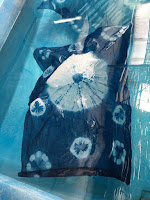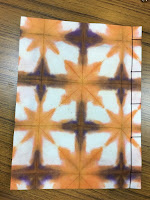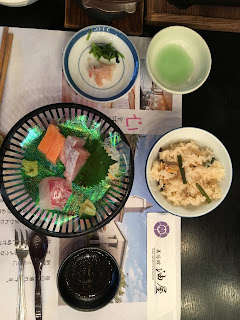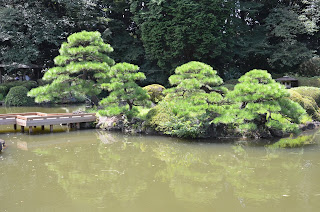The Tokyo to Tokushima flight was a treat, a window seat, not much cloud and lowish flying made for some good views of Japan. So much green, such tall mountains and deep gorges, loads of water; salty and fresh and so many golf courses!
Slow train ride up the valley to the hotel
where everyone who is participating in the workshop is staying. Lucky me got a traditional Japanese room, futon, tatami mats shoji screens and of course traditional Japanese bathroom - onsen style. If the first dinner is anything to go by then Im definitely in for a treat.
Japan from the air. Traditional room at the Aburaya inn Some of the dishes from dinner
Next morning it was a leisurely start after breakfast off to Awagami in the mini bus, everyone is very excited
 |
| ready to strip |
Orientation and meeting the Awagami crew, then we begin with the Kozo bark learning how to strip it, clean it and prepare it for cooking. Three hours later we have all almost cleaned half a kilo each. Everyone had decided that what we thought was an expensive price for kozo paper is actually quite cheap, and we are all definitely ready for dinner and the Craigs lecture on Washi
 |
| stripping Kozo |
 |
| stripped and ready to cook |
 |
| one of the dinner dishes |









































